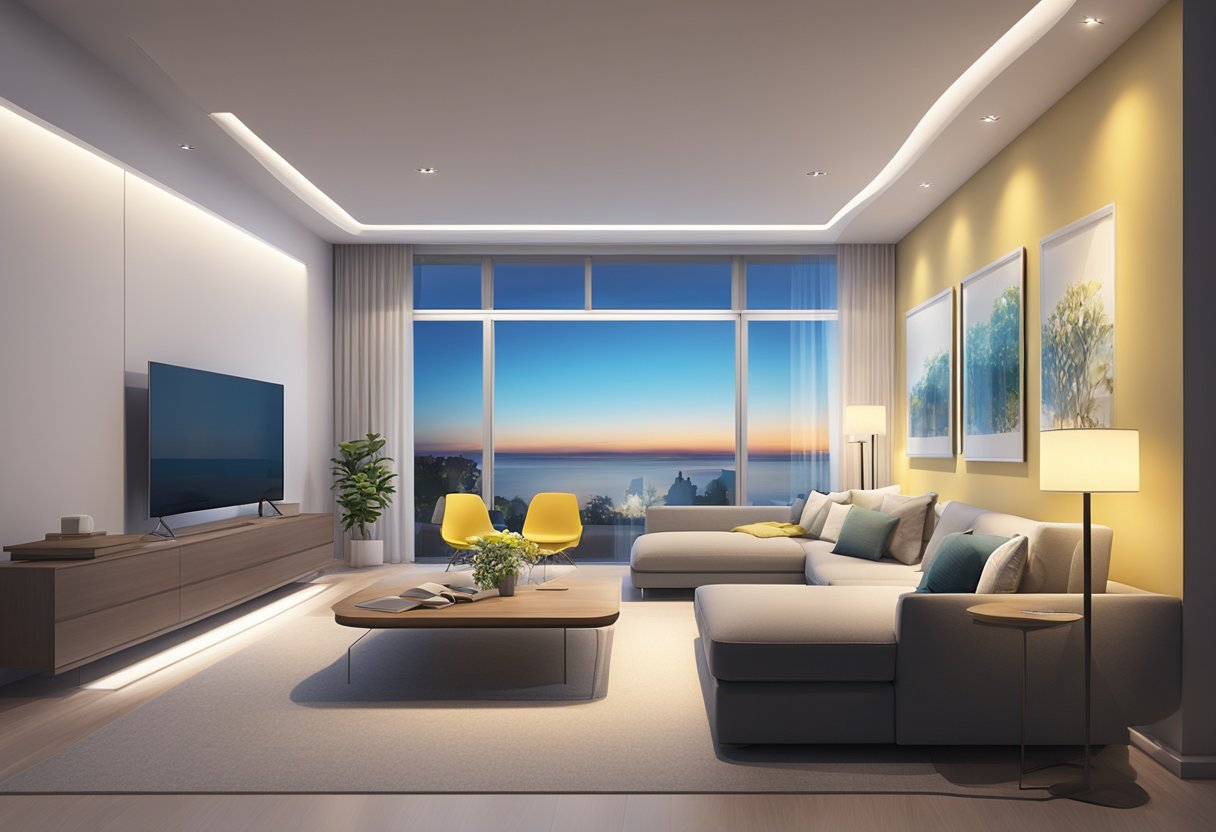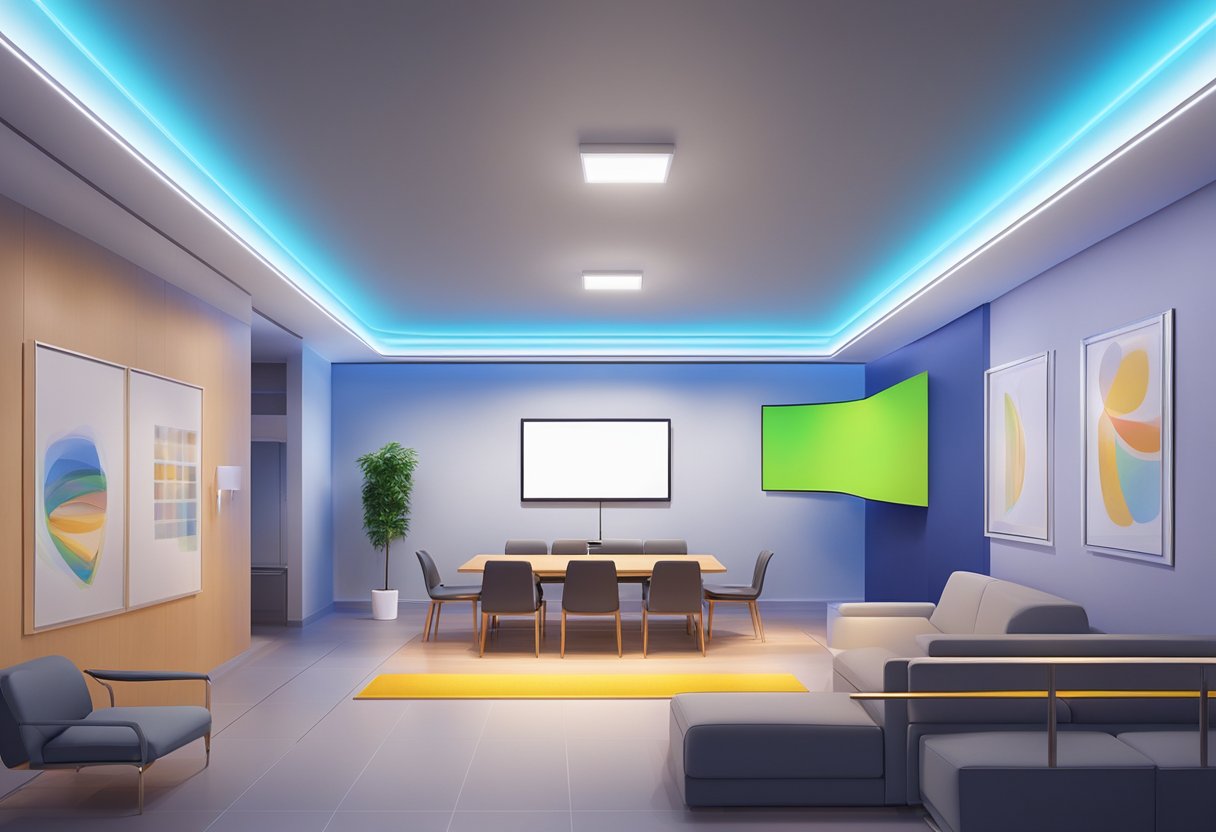Contact
Write to Us And We Would Be Happy to Advise You.
Do you have any questions, or would you like to speak directly with a representative?
By peter
Flat panel LED lighting system is becoming increasingly popular in both residential and commercial settings. These systems offer a sleek and modern look, while providing energy-efficient lighting solutions. LED technology has come a long way in recent years, and flat panel LED lights are now capable of producing bright and even lighting that is comparable to traditional fluorescent lights.

One of the biggest advantages of flat panel LED lighting systems is their energy efficiency. LED lights use significantly less energy than traditional lighting systems, making them a more environmentally friendly option. They also last longer than traditional lights, which means less maintenance and replacement costs over time. Additionally, LED lights do not emit UV rays, which can be harmful to people and materials over time.
Flat panel LED lighting systems are available in a variety of sizes and styles, making them a versatile option for a wide range of applications. They can be used in homes, offices, schools, hospitals, and other commercial settings. Some systems are even designed for outdoor use, such as in parking lots or street lighting. With their energy efficiency and long lifespan, flat panel LED lighting systems are a smart choice for anyone looking to upgrade their lighting to a more modern, sustainable solution.

LEDs are semiconductor devices that emit light when an electric current is passed through them. They are made up of a p-n junction, which is formed by combining two types of semiconductor materials, p-type and n-type. The p-type material has a deficiency of electrons, while the n-type material has an excess of electrons. When the two materials are brought together, the electrons from the n-type material move to the p-type material, creating a depletion region in the p-n junction.
When a voltage is applied across the p-n junction, the electrons in the depletion region recombine with the holes in the p-type material, releasing energy in the form of photons. The color of the light emitted by an LED depends on the bandgap energy of the semiconductor material used. LEDs can emit light in a wide range of colors, including red, green, blue, white, and ultraviolet.
LED lighting systems offer several advantages over traditional lighting systems, including:
LED technology has revolutionized the lighting industry, providing a highly efficient, long-lasting, and durable alternative to traditional lighting systems. As technology continues to evolve, LEDs are expected to become even more efficient and versatile, further expanding their range of applications.

Flat panel LED lighting systems are a popular choice for both commercial and residential applications. They offer energy efficiency, long life, and excellent color rendering. These lighting systems are also known for their slim profile and sleek design, making them an attractive option for modern spaces.
Flat panel LED lighting systems are designed to be both functional and aesthetically pleasing. They are available in a variety of sizes and shapes, including 1×4, 2×2, and 2×4 varieties. The ultra-thin profile of these lighting systems allows them to be easily integrated into a variety of spaces, including offices, hospitals, schools, and homes.
In addition to their slim profile, flat panel LED lighting systems are also available in a range of color temperatures, from warm white to cool white. This allows designers and architects to choose the perfect lighting system to complement their space.
There are two main types of flat panel LED lighting systems: edge-lit and direct-lit. Edge-lit panels use a diffuser to evenly distribute light across the panel, while direct-lit panels use a grid of LEDs to provide more focused light.
Edge-lit panels are popular for their sleek design and even distribution of light. They are often used in spaces where a soft, diffused light is desired, such as in offices or homes. Direct-lit panels, on the other hand, are ideal for spaces where a brighter, more focused light is needed, such as in hospitals or schools.
Overall, flat panel LED lighting systems offer a range of benefits, from energy efficiency to sleek design. They are a versatile lighting option that can be used in a variety of spaces, making them a popular choice for designers and architects alike.
Installing a flat panel LED lighting system requires careful planning and execution. This section will discuss the mounting options and wiring and electrical integration for flat panel LED lights.
Flat panel LED lights can be mounted in a variety of ways, depending on the location and purpose of the lighting. Some common mounting options include:
Proper wiring and electrical integration is crucial for the safe and efficient operation of flat panel LED lights. Here are some important considerations when it comes to wiring and electrical integration:
In conclusion, the installation process for flat panel LED lighting systems involves careful consideration of the mounting options and wiring and electrical integration. By following best practices and working with a qualified electrician, you can ensure a safe and efficient installation that meets your lighting needs.
Luminous efficacy is an important performance metric for flat panel LED lighting systems. It is a measure of how efficiently the light source converts electrical power into visible light. The higher the luminous efficacy, the more efficient the light source is at producing light. A high luminous efficacy means that the light source produces more lumens per watt of electrical power consumed.
Flat panel LED lighting systems have a high luminous efficacy compared to traditional lighting systems. They can achieve a luminous efficacy of up to 130 lumens per watt, which is significantly higher than the 60-80 lumens per watt that traditional lighting systems can achieve. This means that flat panel LED lighting systems are more energy-efficient and can save on electricity costs.
The color rendering index (CRI) is a measure of how accurately a light source can reproduce colors. It is a scale from 0 to 100, with 100 being the most accurate. A high CRI means that the colors appear more natural and vibrant, while a low CRI means that the colors appear washed out or distorted.
Flat panel LED lighting systems have a high CRI compared to traditional lighting systems. They can achieve a CRI of up to 90, which is significantly higher than the 70-80 CRI that traditional lighting systems can achieve. This means that flat panel LED lighting systems can accurately reproduce colors, making them ideal for applications where color accuracy is important, such as in art galleries or retail stores.
The lifespan and reliability of a flat panel LED lighting system are important performance metrics. LED lighting systems have a longer lifespan than traditional lighting systems, and they are more reliable because they have no moving parts.
Flat panel LED lighting systems can have a lifespan of up to 50,000 hours, which is significantly longer than the 10,000-20,000 hours that traditional lighting systems can achieve. This means that flat panel LED lighting systems require less maintenance and replacement, which can save on costs in the long run.
In addition, flat panel LED lighting systems are more reliable because they have no moving parts. This means that they are less prone to failure and require less maintenance than traditional lighting systems.
Flat panel LED lighting systems offer advanced control capabilities that allow users to tailor lighting to their specific needs. These control systems can enhance energy efficiency, reduce costs, and improve occupant comfort.
One of the most significant advantages of flat panel LED lighting systems is their ability to dim. Dimming can help reduce energy consumption and extend the life of the LED fixtures. Flat panel LED lighting systems can be dimmed manually or automatically. Manual dimming can be done using a wall switch or a handheld remote. Automatic dimming can be done using a timer or a sensor.
Flat panel LED lighting systems can be integrated with smart lighting systems. Smart lighting systems use sensors, timers, and other devices to adjust lighting based on occupancy, daylight, and other factors. Smart lighting systems can help reduce energy consumption and improve occupant comfort. Flat panel LED lighting systems can be integrated with smart lighting systems using wireless or wired technology.
Overall, flat panel LED lighting systems offer advanced control capabilities that can enhance energy efficiency, reduce costs, and improve occupant comfort. By dimming and integrating with smart lighting systems, flat panel LED lighting systems can help users tailor lighting to their specific needs.
Flat-panel LED lighting systems are known for their energy efficiency. They use significantly less energy than traditional incandescent bulbs and even compact fluorescent lamps (CFLs). According to research conducted by Lawrence Berkeley National Laboratory, OLED displays made with supramolecular ink can be more energy-efficient than other flat-panel technologies. OLEDs contain tiny organic molecules that emit light directly, eliminating the need for the extra backlight layer that is found in a liquid crystal display (LCD). This makes OLEDs lighter, thinner, and use less energy than other flat-panel technologies.
Another factor that contributes to the energy efficiency of flat-panel LED lighting systems is the use of smart lighting controls, such as occupancy sensors and daylight sensors. These controls automatically turn off the lights when they are not needed, reducing energy consumption and extending the life of the lighting system.
Flat-panel LED lighting systems are also more environmentally sustainable than traditional lighting systems. They use fewer resources and produce less waste than incandescent and CFL bulbs. According to research by Lawrence Berkeley National Laboratory, OLED displays made with supramolecular ink are more environmentally sustainable than other flat-panel technologies. The supramolecular ink is made of inexpensive, Earth-abundant elements instead of costly scarce metals, making it more sustainable and environmentally friendly.
Furthermore, flat-panel LED lighting systems have a longer lifespan than traditional lighting systems, reducing the frequency of replacements and the amount of waste generated. LED lighting systems also contain fewer toxic materials than traditional lighting systems, making them easier to dispose of and less harmful to the environment.
Overall, the energy efficiency and sustainability of flat-panel LED lighting systems make them an attractive option for both commercial and residential applications.
Flat panel LED lighting systems are versatile and can be used in a variety of settings, from commercial to residential to industrial. Here are a few use cases for these lighting systems:
Flat panel LED lighting systems are ideal for commercial settings such as offices, retail stores, and hospitals. They provide bright, even lighting that can improve productivity and reduce eye strain. In addition, these lighting systems are energy-efficient and can help businesses save money on their electricity bills.
Flat panel LED lighting systems are also suitable for residential use, particularly in modern homes with sleek, minimalist design aesthetics. These lighting systems can be used to create a clean, uncluttered look that complements the overall design of the home. They can also be used to highlight specific features of a room, such as artwork or architectural details.
Flat panel LED lighting systems are also ideal for industrial and emergency lighting applications. They can be used to provide bright, even lighting in warehouses, factories, and other industrial settings, making it easier for workers to see and perform their tasks. In addition, these lighting systems can be used for emergency lighting in the event of a power outage or other emergency situation.
Overall, flat panel LED lighting systems are versatile and can be used in a variety of settings. Whether you’re looking to improve productivity in a commercial setting, highlight specific features in a home, or provide emergency lighting in an industrial setting, these lighting systems are an excellent choice.
Do you have any questions, or would you like to speak directly with a representative?